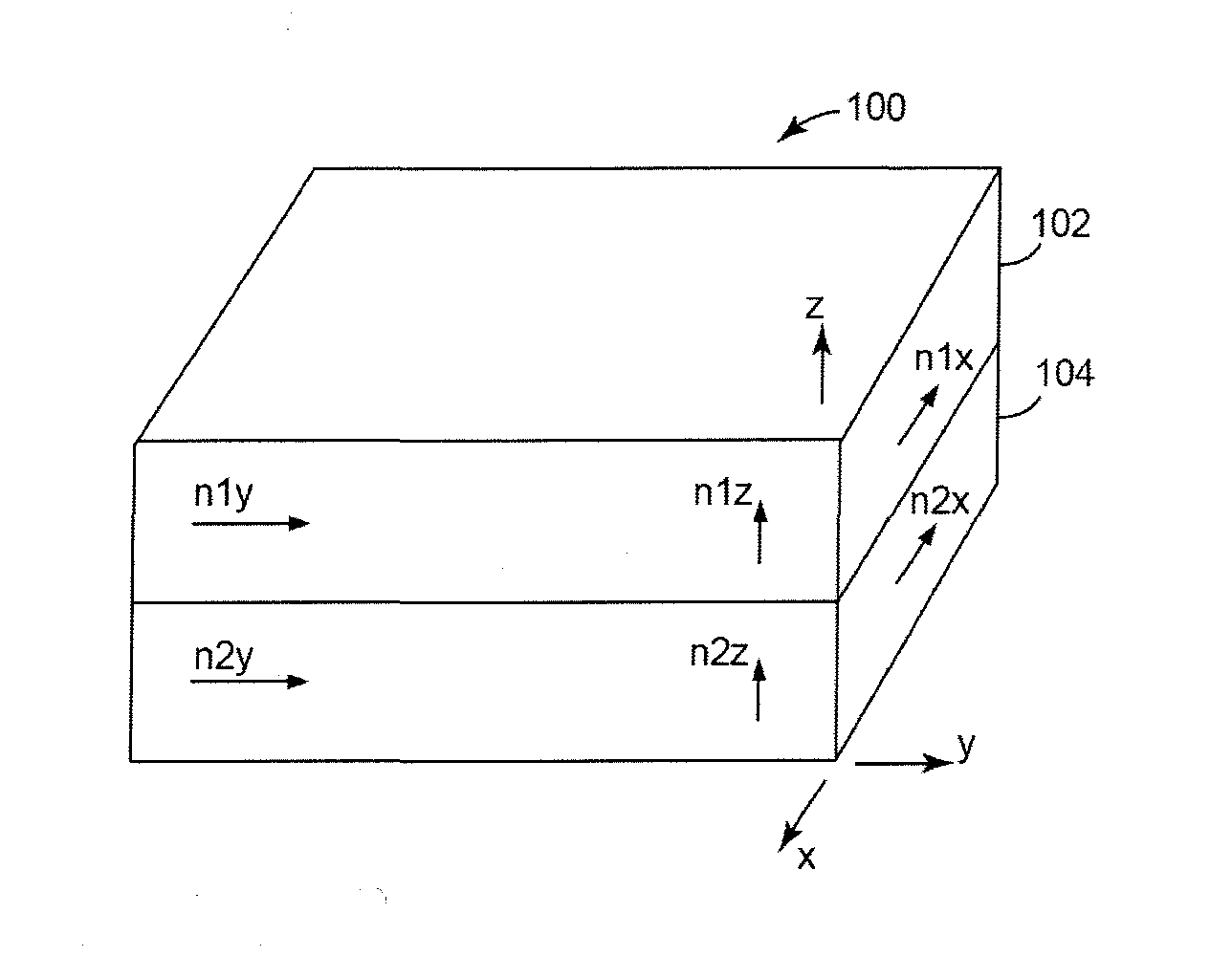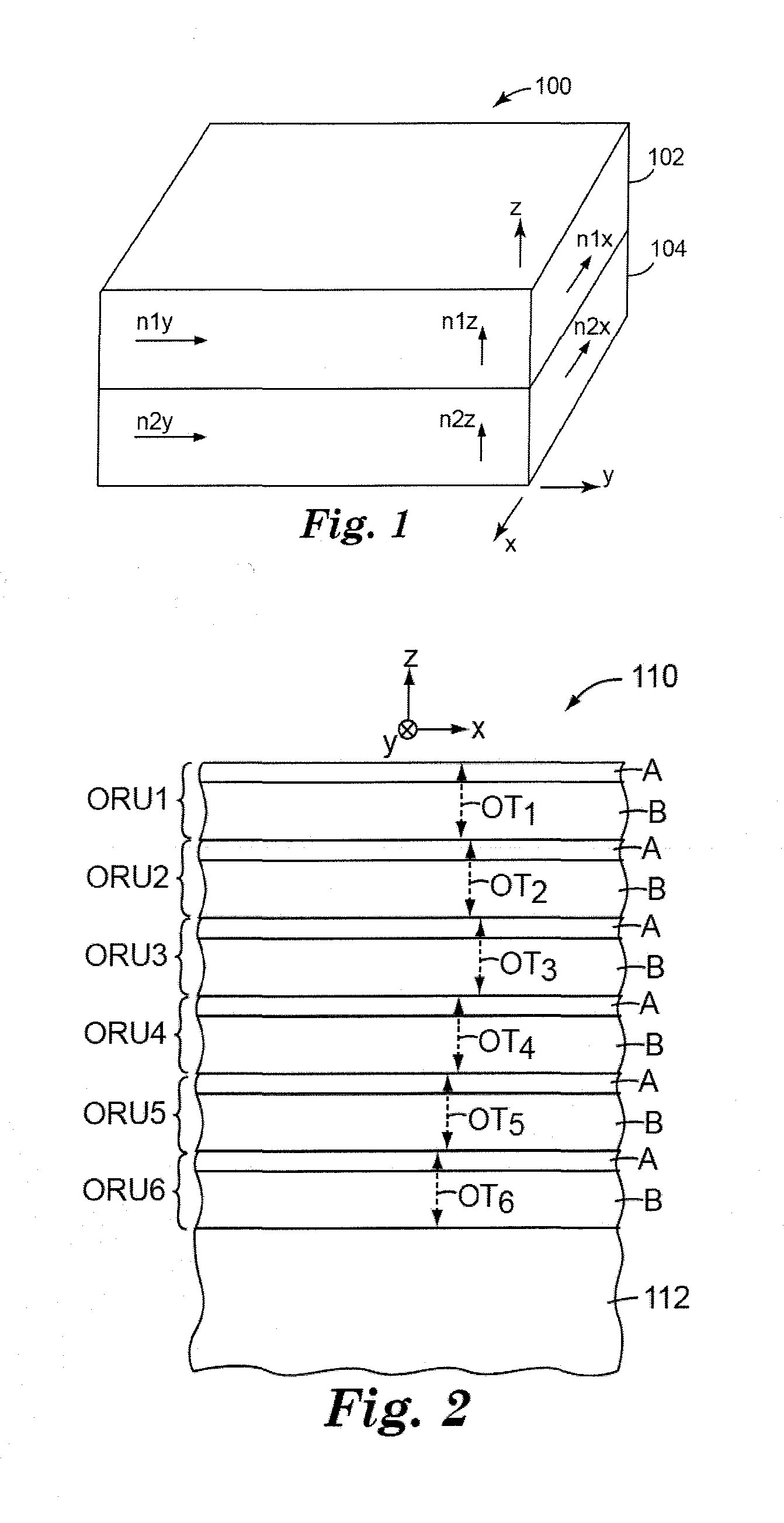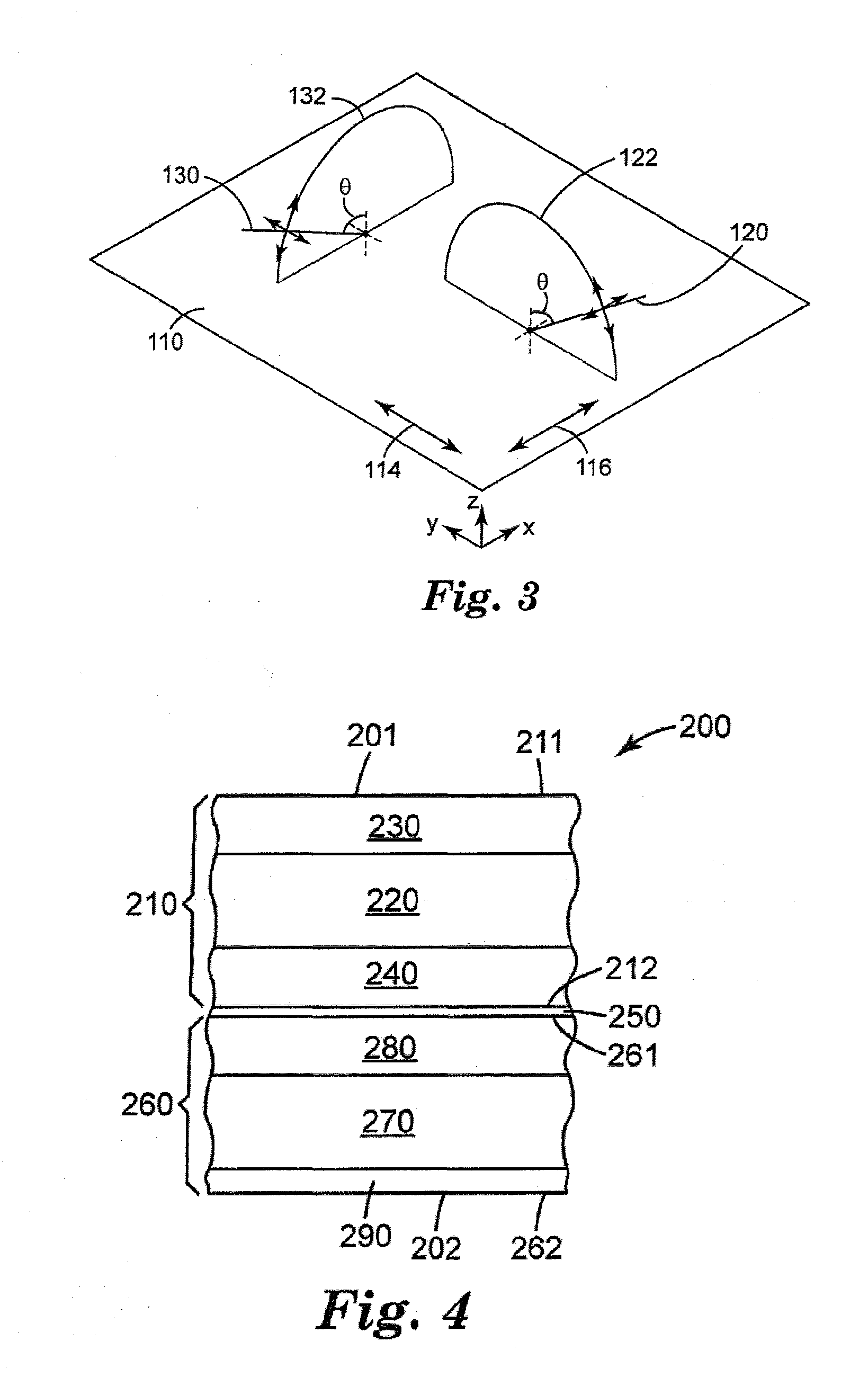Multilayer stack combinations with interleaved overlapping harmonics for wide visible-infrared coverage
a multi-layer stack and harmonic technology, applied in the field of multi-layer optical film constructions, can solve the problems of color issue often arises, and it is typically undesirable for the film to impart a significant colored (non-white) appearance to the display
- Summary
- Abstract
- Description
- Claims
- Application Information
AI Technical Summary
Benefits of technology
Problems solved by technology
Method used
Image
Examples
example 1
Coextruded Polymeric Film Stack
[0147]Two packets of 275 layers each of alternating low and high index polymer layers were coextruded as a cast web and then stretched in a tenter on a continuous film making line. The high index material was a 90 / 10 coPEN (90% naphthalate units to 10% teraphthalate units). For the design polarization, the birefringent high index material had a measured refractive index of 1.795. The low index material differed between packet 1 and packet 2 of the microlayers. The low index material for packet 1 was a 55 / 45 coPEN and having an isotropic index n=1.605. The low index material for packet 2 was NEOSTAR FN007 copolyester from Eastman Chemical and had a measured index of 1.505. All indices were measured at 633 nm.
[0148]The layer thickness values of the oriented film were measured using Atomic Force Microscopy (AFM), and the layer thickness profiles 18a and 18b for packets 1 and 2 are shown in FIG. 18. When the layer thickness values are measured, the measure...
example 2
Coextruded Polymeric Film
[0164]Two packets of 375 layers each of alternating low and high index polymer layers were coextruded as a cast web and then stretched in a tenter on a continuous film making line. The high index material was PEN (poly(ethylene naphthalenedicarboxylate)). For the design polarization, the birefringent high index material had a measured refractive index of 1.845. The low index material was PETg (EASTAR GN071 copolyester from Eastman Chemical, Kingsport, Tenn.) with an index of 1.564. All indices were measured at 633 nm.
[0165]The process conditions for the fabrication of the film of Example 2 were chosen so as to generate an f-ratio of 0.64, for all of the ORUs, of both packet 1 and packet 2, and to provide a reflection band for a chosen linear polarization of light, that extends to about 1050 nm at normal incidence angle. The layer thickness values of the oriented film were measured using Atomic Force Microscopy (AFM). Measured reflection spectra for each of p...
example 3
Coextruded Polymeric Film
[0172]Two packets of 325 layers each of alternating low and high index polymer layers were coextruded as a cast web and then stretched in a tenter on a continuous film making line. The high index material was PEN (poly(ethylene naphthalenedicarboxylate)). For the design polarization, the birefringent high index material had a measured refractive index of 1.845. The low index material was PETg (EASTAR GN071 copolyester from Eastman Chemical, Kingsport, Tenn.) with an index of 1.564. All indices were measured at 633 nm.
[0173]The process conditions for the fabrication of the film of Example 2, were chosen so as to generate an f-ratio of 0.64, for all of the ORUs, of both packet 1 and packet 2, and to provide a reflection band for a chosen linear polarization of light, that extends to about 1250 nm at normal incidence angle. The layer thickness values of the oriented film were measured using Atomic Force Microscopy (AFM). Measured reflection spectra for each of ...
PUM
 Login to View More
Login to View More Abstract
Description
Claims
Application Information
 Login to View More
Login to View More - R&D
- Intellectual Property
- Life Sciences
- Materials
- Tech Scout
- Unparalleled Data Quality
- Higher Quality Content
- 60% Fewer Hallucinations
Browse by: Latest US Patents, China's latest patents, Technical Efficacy Thesaurus, Application Domain, Technology Topic, Popular Technical Reports.
© 2025 PatSnap. All rights reserved.Legal|Privacy policy|Modern Slavery Act Transparency Statement|Sitemap|About US| Contact US: help@patsnap.com



